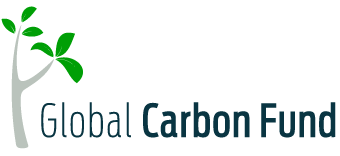Verra’s Cookstove Credits Get ICVCM Green Light – Boosting Carbon Market Trust
Verra’s new cookstove methodology just received approval from the Integrity Council for the Voluntary Carbon Market (ICVCM). This approval confirms that the method meets high scientific and transparency standards. It also proves that cookstove carbon credits lead to real and measurable emissions cuts, improving the lives of millions.
With this recognition, clean cooking projects gain more credibility in the voluntary carbon market. The methodology also aligns with Article 6 of the Paris Agreement and CORSIA.
Mandy Rambharos, CEO of Verra, stated,
“Today’s approval by the ICVCM is a defining milestone for clean cooking projects and the voluntary carbon market. There are 2.3 billion people in the world who still rely on polluting cooking methods; cookstove projects and the carbon credits they generate can deliver both clean cooking technologies and the necessary finance to provide them to local communities. The ICVCM’s decision is a powerful endorsement of cookstove credits as a high-integrity climate solution that provides measurable environmental benefits for global impact.”
ICVCM’s Core Carbon Principles (CCPs) for Cookstove Carbon Credits
The ICVCM has established the CCPs as a benchmark for high-quality carbon credits. These principles set the foundation for evaluating carbon credits and ensuring they meet rigorous standards for transparency, credibility, and integrity.
Understanding Cookstove Carbon Credits
Cookstove credits are part of avoidance-based carbon projects aimed at reducing emissions from cooking. These projects fall into two categories:
- Fuel Efficiency: These projects distribute more efficient cookstoves, reducing overall fuel consumption.
- Fuel Switch: These initiatives help households transition from high-emission fuels (such as charcoal) to cleaner alternatives like electricity.
All clean cookstove methodologies aim to measure or estimate fuel savings using specific frameworks, improve efficiency to reduce fuel demand, and ease pressure on forests, allowing them to regenerate naturally.
To ensure cookstove projects provide genuine environmental and social benefits, they must meet strict criteria:
- Robust methodologies: Projects must follow advanced monitoring, reporting, and verification (MRV) processes to ensure emission reductions are real, additional, and verifiable.
- Transparency: Buyers should have access to clear reports detailing project impacts, financial transactions, and compliance with global standards.
- Fairness and equity: Projects must prioritize informed community consent and ensure equitable revenue distribution.
- Sustainability: These projects should create lasting community benefits without causing economic distortions.
What’s inside Verra’s VM0050 for Clean Cooking?
A well-established methodology, VM0050, is used for implementing clean cooking approaches. It incorporates the latest scientific research and best practices for distributed thermal energy generation.
The methodology:
- Integrates the latest advancements in clean cooking technologies.
- Consolidates and strengthens previous cookstove methodologies.
- Ensures continued access to carbon markets with fair transition timelines.
- Responds to market feedback and allow for further improvements.
The Broader Impact of Clean Cooking Projects
If clean cooking solutions reach global adoption by 2030, the impact will be significant:
- Emission Reductions: 1.5 gigatonnes of CO2e avoided—comparable to removing 350 million passenger vehicles from the roads. (Source: International Energy Agency, 2023)
- Forest Protection: 225 million hectares of forest saved, equivalent to the size of the Democratic Republic of Congo. (Source: International Energy Agency, 2023)

ity Cookstove Carbon Credits
Cookstove Credits for Corporations
Companies looking to enhance their ESG performance can also invest in high-quality cookstove projects to offset emissions and meet carbon reduction commitments.
These projects offer a credible solution under key frameworks such as the Paris Agreement, CORSIA, the ISO Net Zero Standard for Corporates, the Science-Based Targets Initiative (SBTi), the IETA Guidelines for High Integrity Use of Carbon Credits, and the Oxford Offsetting Principles.
Beyond Emissions Reductions
Clean cooking initiatives offer more than just emissions reduction. They tackle critical social, environmental, and equity challenges. These projects promote climate justice by expanding clean energy access in underserved regions while advancing global sustainability goals.
They also improve fuel efficiency. Unlike traditional stoves, they generate the same heat using less fuel, reducing dependence on wood and charcoal. This shift lowers deforestation rates, helping to protect and restore forests.
Preserving forests supports biodiversity, carbon sequestration, water regulation, and soil stabilization. With less wood harvested for cooking, degraded land recovers, fostering reforestation and ecosystem regeneration. Some projects even incorporate tree-planting programs to amplify environmental benefits.

ity Cookstove Carbon Credits
Along with Verra, ICVM also approved two other cookstove methodologies by Gold Standard while rejecting many others. With the rise of voluntary carbon markets, stricter rules ensure that clean cookstoves cut emissions in a real, measurable, and practical way.
The post Verra’s Cookstove Credits Get ICVCM Green Light – Boosting Carbon Market Trust appeared first on Carbon Credits.





